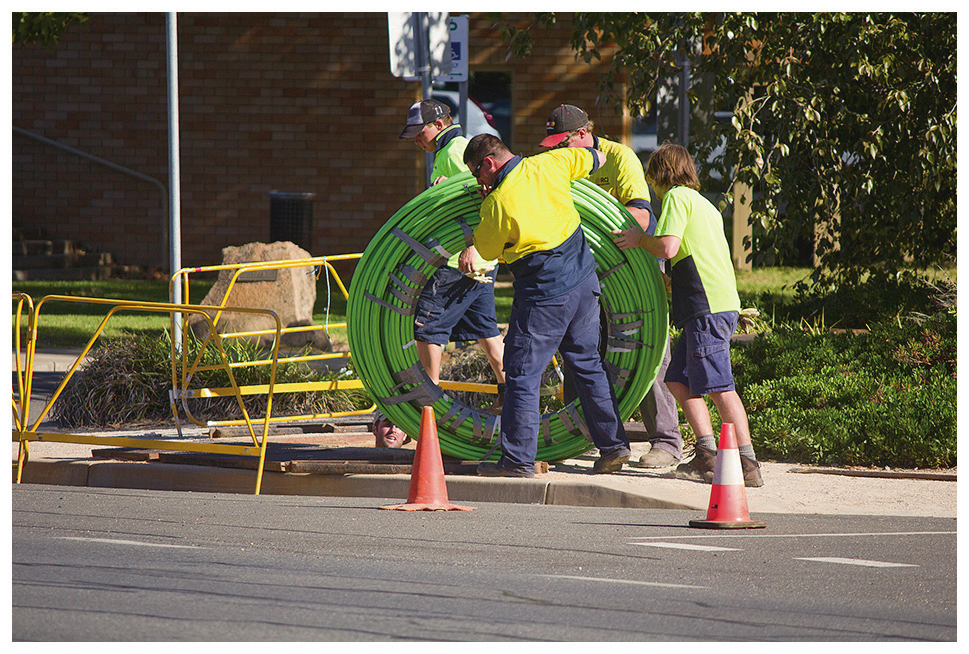In August of 2020, engineers at University College London (UCL) in the United Kingdom reported a new record for transmitting data through a single optical fiber, hitting 178 terabits per second (Tbps) and beating the old mark by 20% . And in June 2020, two US telecommunications companies, Sunnyvale, CA-based Infinera and Little Rock, AK-based Windstream, reached another milestone. For the first time, the collaborators maintained an 800 gigabits per second (Gbps) transmission rate in one fiber over a long distance, using a line running more than 730 km from San Diego, CA, to Phoenix, AZ, USA .
These achievements demonstrate two of the novel approaches that may help meet the insatiable demand for new capacity in optical fiber networks. They are all the more significant because they did not require new types of cable, said Alan Willner, a professor of electrical engineering at the University of Southern California in Los Angeles, CA, USA. ‘‘Even with an existing deployed fiber, one can dramatically upgrade the capacity of the system by innovating at the terminals.”


An explosion in internet traffic is driving the demand for more optical fiber bandwidth. Networking giant Cisco (San Jose, CA, USA) has estimated that internet traffic will be about three times higher in 2021 than it was in 2016 . However, that estimate did not account for effects of the coronavirus disease 2019 (COVID-19) pandemic, which has forced more people to work from home and increased their reliance on the internet for entertainment, shopping, and other activities they once did offline . In addition, the rollout of fifth-generation (5G) cellular networks in the United States and other countries will further boost the need for fiber optic capacity . ‘‘People used to think you didn’t need terabit transmission rates—but we are there now,” said Dan Blumenthal, a professor of electrical and computer engineering at the University of California, Santa Barbara.
Increasing the capacity of optical fibers could bring another benefit, said Blumenthal. Fiber optic networks consume a large amount of power, so ‘‘energy efficiency is paramount,” he said. ‘‘The more bandwidth you get, the better.”
New types of optical fiber may be able to take some of the load. In the last 40 years, various improvements have increased the capacity of optical fibers by more than ten million times [6], and engineers are pushing for more. The glass core of a fiber is what transmits light, and one route to boosting capacity is so-called multicore fiber that is essentially several fibers in one .
Multicore designs have set transmission records in the laboratory. In 2020, researchers at the National Institute for Communications Technology in Japan delivered data at a rate of 172 Tbps over a fiber with three cores . (The UCL team’s record was for single-core fiber.) The first field tests of a multicore fiber started in Italy in 2019 . Researchers are pursuing other promising avenues , including hollow fibers through which light travels 30 times faster.
But new fibers face a huge hurdle—the cost of installation (Fig. 1). Laying fiber optic lines can cost up to 500 000 USD·km-1, spurring a search for cheaper alternatives. ‘‘There has to be installation of new fiber,” said John Ballato, a professor of materials science and engineering at Clemson University in Clemson, SC, USA. ‘‘But there is already a ton of fiber in the ground. The question is, can we squeeze more data through existing networks?”
Fig. 1. Workers bury new fiber optic cable in Wagga Wagga, NSW, Australia. The high cost of installing such cable has helped drive research into expanding the amount of information existing optical fiber networks can carry. Credit: Bidgee, Wikimedia Commons (CC BY-SA 3.0 AU).
Much of the installed optical fiber was designed to transmit at 100 Gbps. To expand its data-carrying ability, ‘‘we are now playing around with the attributes of the light and using it to pack more information into the fiber with minimal distortion,” said Ballato. One strategy, known as wavelength-division multiplexing, involves increasing the number of wavelengths of light traveling through the fiber, thus adding information-carrying channels .
The UCL group took this strategy a step further by exploiting a block of spare wavelengths. Fiber optic lines for long-distance transmission typically carry only light in the so-called C band, which spans 1530–1565 nm, although some cables make use of portions of the L band between 1568 and 1605 nm. The UCL team added wavelengths in the little-used S band between 1484 and 1520 nm. Deploying three lasers and a combination of amplifiers, they achieved a spectral range of 16.8 THz, the most for a fiber with one core and about twice the value for the best commercial fiber optic networks. With the added bandwidth, the researchers were able to send data at 178 Tbps for 40 km over a standard fiber, which had a nominal capacity of 100 Gbps . ‘‘This a beautiful demonstration of using a broader wavelength range,” said Willner.
However, transmitting more wavelengths typically means adding lasers and other equipment, which is expensive and consumes large amounts of power. In 2020 another team demonstrated that they could pack much of the electronics into one microchip . Bill Corcoran, a lecturer in electrical and computer systems engineering at Monash University in Melbourne, VIC, Australia, and colleagues developed a microcomb, a device that pairs a laser with an optical resonator that splits the laser’s light into 80 wavelengths. The researchers reported a transmission rate of 40 Tbps for nearly 77 km through an installed fiber linking Monash University to Royal Melbourne Institute of Technology University, another university in the Melbourne area. ‘‘We’ve provided a way to reduce the amount of equipment needed,” said Corcoran.
The Infinera–Windstream collaboration took on a different transmission problem. Telecommunications companies are debuting networks with capacities of 400 Gbps and even 800 Gbps. But because performance declines with distance, a 400 Gbps line typically can sustain that transmission rate for only about 100 km. The Infinera–Windstream team was able to maintain the 800 Gbps rate over 700 km in part because it used so-called Nyquist subcarriers, which are generated by carving the beam from each laser into multiple data streams. One benefit to the approach is that it reduces chromatic dispersion as the light travels through the fiber.
Ballato said that demonstrations like the one by the UCL group are important because they show what is possible, but the Infinera– Windstream test illustrates what performance is attainable now. ‘‘They are showing 800 Gbps over a real network, which is impressive.”
The upshot, the experts agree, is that large gains in capacity are on the way. ‘‘The result from the UCL group is a sign of things to come. It may take a few years, but the commercial demand is there,” said Ballato. But innovation will have to continue, said Willner. ‘‘Even when you double capacity, it will only last for a few years.”

